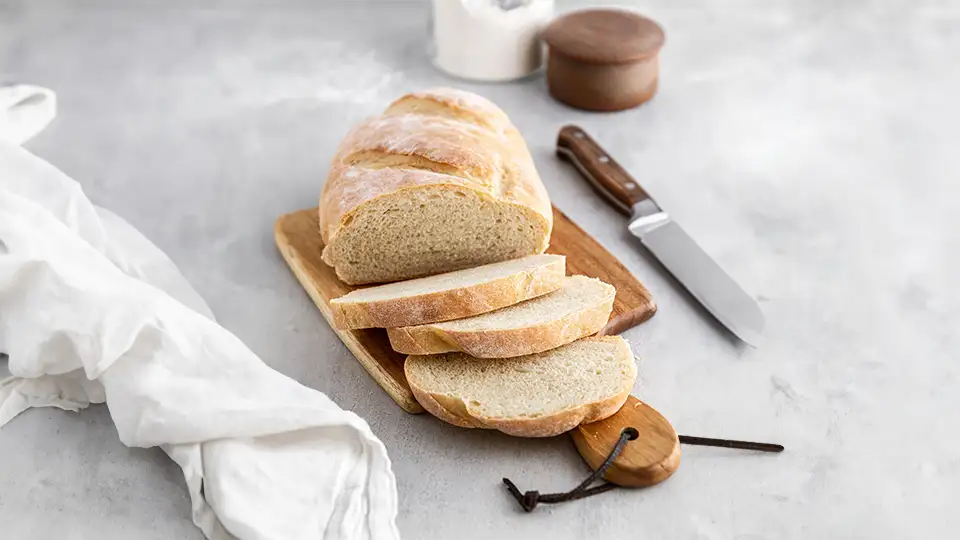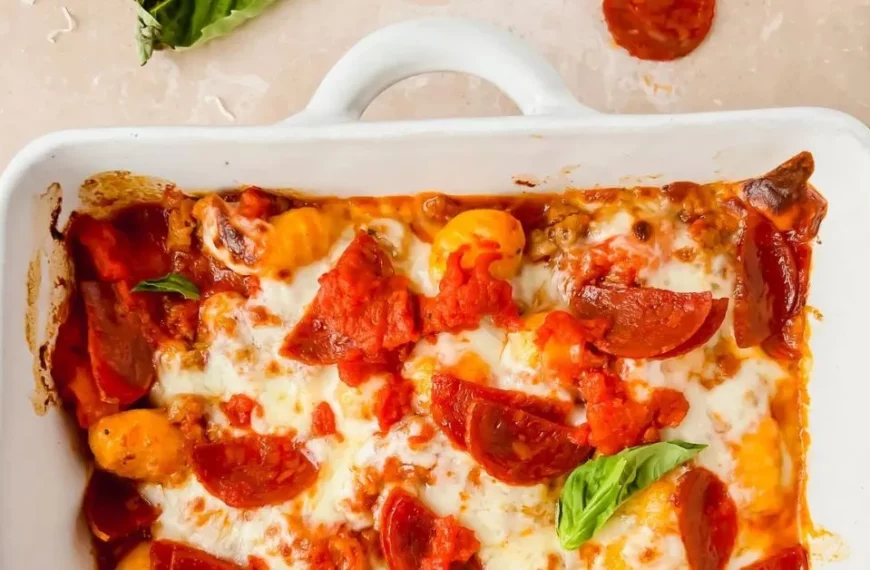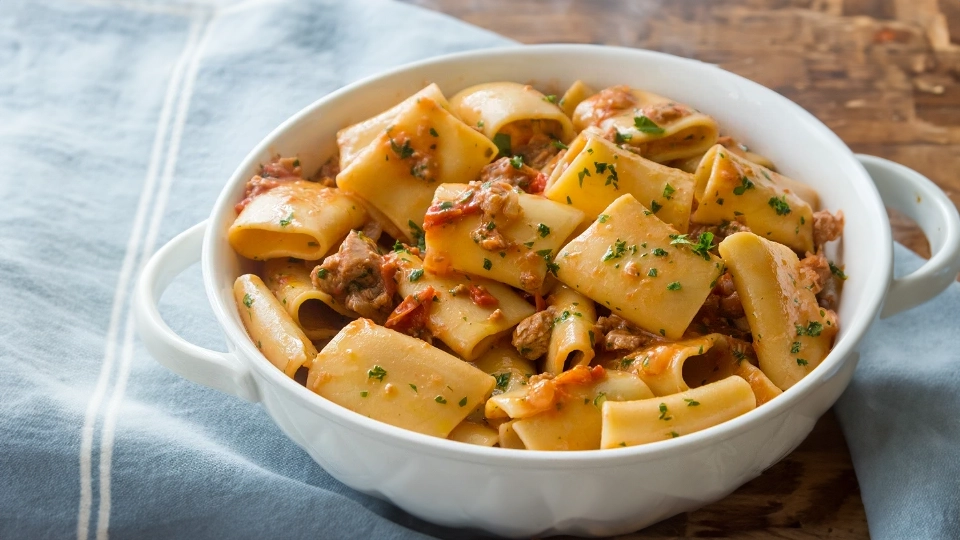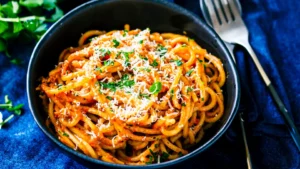If there’s one hearty dish that resonates with comfort and flavor-rich ingredients, it’s Italian minestrone soup. As the cool weather starts to wrap its arms around us, a steaming bowl of this classic Italian dish is like a warm hug for the soul. But this isn’t just another bowl of soup. It’s an ancient recipe, a veritable circus of flavors that brim with the history of Italian kitchens, passing through generations to become a timeless brunch offering. In this blog, I’m sharing step-by-step instructions on how to craft the perfect bowl of minestrone soup, and how to elevate its essence to fit your personal taste.
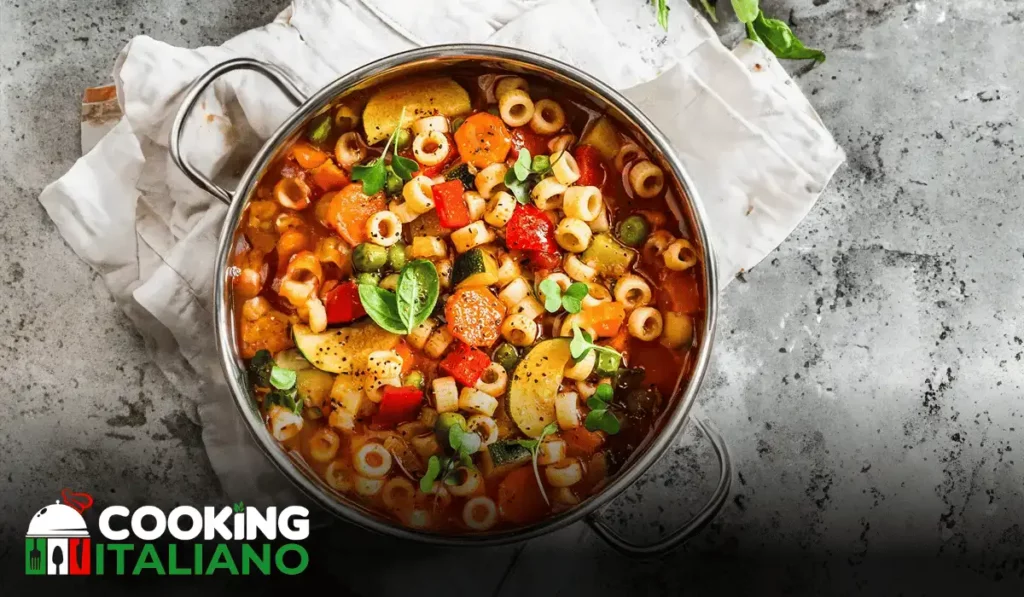
The history of minestrone soup is as rich as the soup itself. With its origins likely tracing back to pre-Roman dates, this once humble vegetable and grain stew has evolved into a celebrated dish that embodies the rustic essence of Itality. Rooted in the farm-to-table philosophy, its hearty mix of seasonal vegetables, legumes, and pasta or rice, tells the story of resourcefulness and the Italian love for flavorful, hearty meals.
Today, we’re not just exploring the culinary tale of minestrone; we’re setting the stage for you to become a maestro of this venerable dish in your own kitchen. From the choice of ingredients to the final garnish, we’ll cover all you need to know to serve a minestrone that would make an Italian nonna proud.
Italian Minestrone Soup
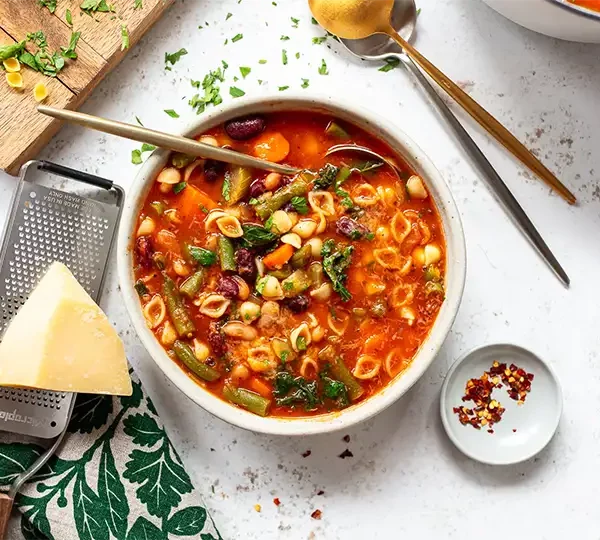
Ingredients
The beauty of minestrone lies in its flexible recipe—it’s more of a concept than a strict set of ingredients. Below is a list of classic components that create the flavorful base, but feel free to modify with what’s freshest or what you have in your pantry.
Vegetables:
- 2 medium onions, finely chopped
- 2 carrots, peeled and diced
- 2 celery stalks, diced
- 3 garlic cloves, minced
- 2 medium zucchinis, diced
- 1 cup green beans, cut into bite-sized pieces
- 1 cup cabbage, shredded
- 1 cup Swiss chard or kale, finely chopped
- 1 can (15 ounces) diced tomatoes, with juices
- 6 cups vegetable or chicken broth
Herbs and Spices:
- 1 teaspoon dried oregano
- 1 teaspoon dried basil
- 1 bay leaf
- Salt and pepper, to taste
Legumes:
- 1 can (15 ounces) kidney beans, drained and rinsed
- 1 can (15 ounces) cannellini beans, drained and rinsed
Pasta:
- 1 cup ditalini pasta, or any small pasta shape
Garnish (Optional):
- Grated Parmesan cheese
- Freshly chopped parsley
Instructions
Now that we’ve gathered all the ingredients, it’s time to turn them into something truly special. I find that the best approach is to prepare all the ingredients in advance, just like a professional kitchen, and the rest of the process will flow like sweet Italian opera.
Step 1: Sauté the Aromatics
- In a large pot or Dutch oven, heat olive oil over medium-high. Once shimmering, add the onions, carrots, and celery. Sauté for 5 minutes until the onions are translucent and the vegetables begin to soften.
- Add the garlic and cook for an additional minute, stirring regularly so it doesn’t brown.
Step 2: Build the Base
- Stir in the dried spices—oregano, basil, bay leaf—and season with salt and pepper. Mix well to coat the vegetables.
- Pour in the canned tomatoes with their juices and cook for another 5 minutes, letting the flavors meld.
Step 3: The Heart of the Soup
- Add the chopped zucchini, green beans, and cabbage to the pot. Pour over the broth, and bring the mixture to a boil.
- Once boiling, reduce to a simmer, cover, and cook until the vegetables are soft, about 20 minutes.
Step 4: The Finale
- Stir in the chopped Swiss chard or kale and the drained beans.
- Increase the heat to return the soup to a boil, then reduce to a simmer.
- Add the ditalini pasta and cook until al dente, about 10 minutes.
- Taste the soup and adjust the seasoning if necessary.

DID YOU MAKE THIS RECIPE?
Tag @amcookingitaliano on Instagram and hashtag it #amcookingitaliano!
Tips for Customization
This is your chance to make the minestrone truly your own. Here are a few ideas to guide you into crafting a unique flavor profile:
- Protein Power-Up: Consider adding cooked diced chicken, crumbled Italian sausage, or even a combination of different seafood for a protein boost.
- Going Grains: Switch up the pasta for other grains like rice or barley. Each will bring its own texture and heartiness to the soup.
- Vegetable Varieties: Depending on the season and your personal preference, the vegetable lineup can be jazzed up with anything from butternut squash to fennel.
- Spice It Up: For a little kick, add red pepper flakes or a pinch of cayenne to the sautéed aromatics.
How to Store Your Minestrone
Minestrone, like many soups, only gets better with time as the flavors continue to blend. Store any leftovers in an airtight container in the refrigerator for up to 5 days. You can also freeze it for about 2-3 months. Just remember to cool the soup completely, leaving some space at the top of the container to account for expansion.
Conclusion
Serve this delectable minestrone with a sprinkling of grated Parmesan and a handful of freshly chopped parsley. I can assure you, it will be the star of the brunch table, leaving your guests with a warm, wholesome experience that’s oh-so-Italian.

Bravo! You’ve done it. You’ve not only cooked a beautiful, steaming pot of minestrone, you’ve embraced the craftsmanship and heritage of traditional Italian cooking. As you continue to hone your culinary skills, remember that every dish you cook tells a story; a narrative of your cultural heritage, personal taste, and the warmth of your home.
FAQs
Q: Can I use fresh tomatoes instead of canned?
A: Absolutely! Use about 2 cups of diced fresh tomatoes, and you might want to cook them a little longer to stew and break down effectively.
Q: Why do you add the pasta to the soup instead of cooking it separately?
A: A single pot means less cleanup, and more importantly, the pasta soaks up flavors from the soup as it cooks, adding depth to the dish.
Q: What can I use to replace the pasta for a gluten-free option?
A: You can use gluten-free pasta, quinoa, or rice as a substitute, adjusting the cooking time as necessary.
Q: Should I blanch the kale or chard before adding them to the soup?
A: No need – they will cook quickly in the simmering liquid of the soup.
Q: I want to add meat, when should I do that?
A: Sauté any raw meats with the aromatics in the first step. If it’s precooked, stir it in when you add the pasta.



